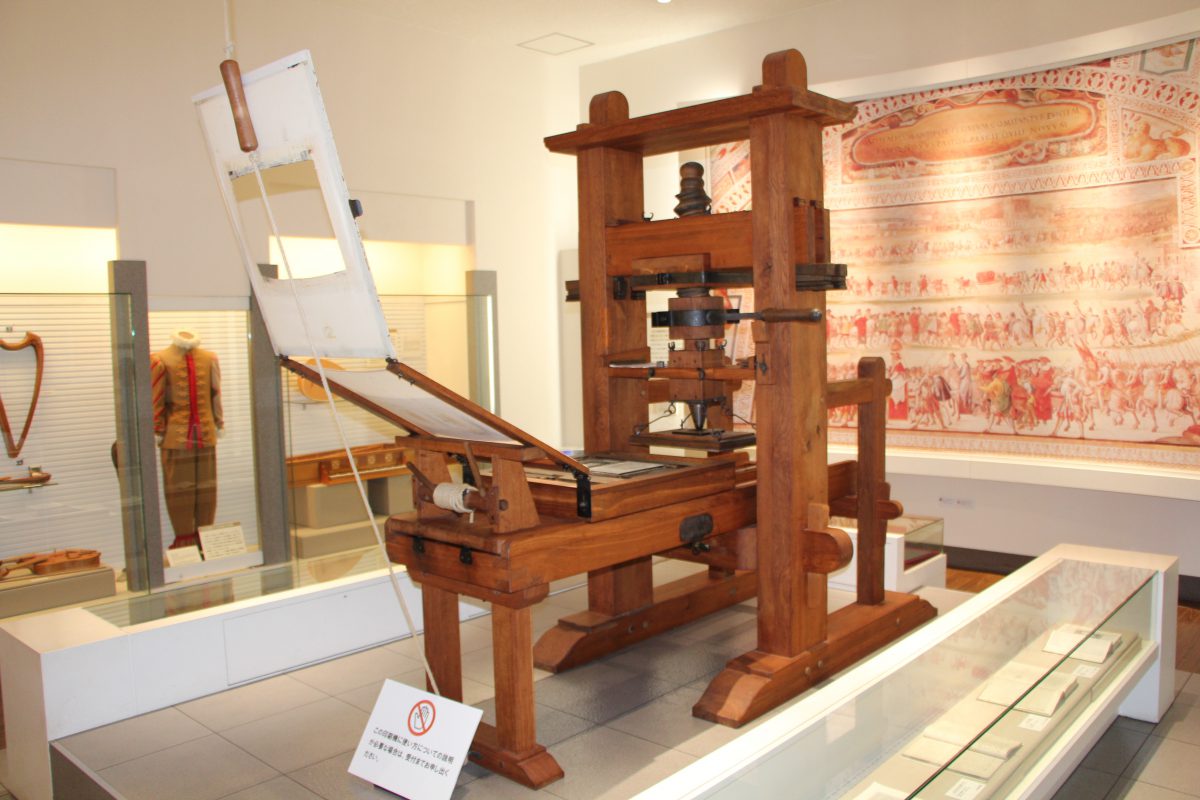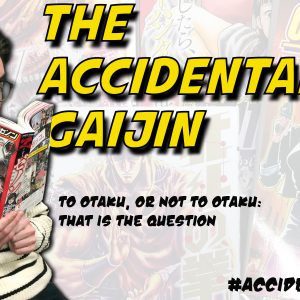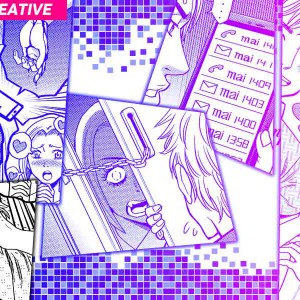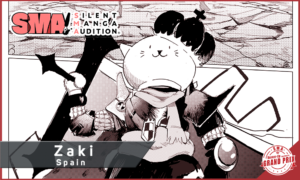
In the center of Kyushu, in the far west of Japan, lies a land called Kumamoto. Surrounded by a bottle green sea and towering mountains, this place of outstanding beauty is known as the “Land of Fire”…and where there is beautiful nature, unique and intriguing cultures flourish. Naturally, the people of Kumamoto have imbued their own culture and language with these same, mystifying characteristics…
 …and here is what the book looks like!
…and here is what the book looks like!
 This is a letter-press printed version of the book “Heike Monogatari (‘The Tale of Heike‘ – a epic account written during the 12th Century)”, on display in the “Amakusa Collegio Museum”. But there’s something strange… it’s written using the alphabet, but the words don’t seem to be English, Spanish, Portuguese, or any other language.
“NIFONNO COTOBA TO Hiftoria uo narai xiran to FOSSVRV FITO NO TAME NI XEVA NI YAVARAGVETARV FEIQE NO MONOGATARI… “
Hmm, what language could this be…??
The answer is the “Japanese spoken language written in alphabet”, akin to “Roma-ji”! Why would they do something so bothersome!?!? Well, the story goes back a few centuries…
The very first “Letter Printing Press” was invented in the 15th Century by German technician, Johannes Gutenberg. Before this pioneering invention, books were either laboriously printed via a hand carved, curved woodblock or painstakingly transcribed by hand. As such, these treasures were only available to the church or very rich people.
Then Gutenberg changed the world. By laying ‘type’, a singular letter into a ‘bed’ to make words, cover with ink and then press the ‘bed’ onto paper, this innovative German inventor turned what would take months into minutes. This made publication WAY easier and cheaper, enabling everyone to access literature that was previously in the hands of the elite. It is said that the Gutenberg Printing Press not only revolutionized learning, but changed the face of Christianity, once and for all.
This is a letter-press printed version of the book “Heike Monogatari (‘The Tale of Heike‘ – a epic account written during the 12th Century)”, on display in the “Amakusa Collegio Museum”. But there’s something strange… it’s written using the alphabet, but the words don’t seem to be English, Spanish, Portuguese, or any other language.
“NIFONNO COTOBA TO Hiftoria uo narai xiran to FOSSVRV FITO NO TAME NI XEVA NI YAVARAGVETARV FEIQE NO MONOGATARI… “
Hmm, what language could this be…??
The answer is the “Japanese spoken language written in alphabet”, akin to “Roma-ji”! Why would they do something so bothersome!?!? Well, the story goes back a few centuries…
The very first “Letter Printing Press” was invented in the 15th Century by German technician, Johannes Gutenberg. Before this pioneering invention, books were either laboriously printed via a hand carved, curved woodblock or painstakingly transcribed by hand. As such, these treasures were only available to the church or very rich people.
Then Gutenberg changed the world. By laying ‘type’, a singular letter into a ‘bed’ to make words, cover with ink and then press the ‘bed’ onto paper, this innovative German inventor turned what would take months into minutes. This made publication WAY easier and cheaper, enabling everyone to access literature that was previously in the hands of the elite. It is said that the Gutenberg Printing Press not only revolutionized learning, but changed the face of Christianity, once and for all.
 Fast forward to the late 16th Century, Jesuit missionaries from Portugal and Spain are some of the first Europeans to land on the shores of Japan, tasked with spreading Christianity. The “curious and studious” people of Japan (as noted by the missionaries) were intrigued by these strangers from a strange land, and eagerly consumed their knowledge. Europe was known to Japan however, even as far back as 1582, when an embassy of Japanese boys (around the age of 12-14) was dispatched to the continent in the spirit of studying the Christian world (Search the “Tensho Embassy” for details). Astounded and amazed by how different European culture was, they returned to Japan ladened with “souvenirs”, including a Gutenberg Printing Press.
Meanwhile, the missionaries were hard at work converting a small number of Japanese to their religion. But Japanese Christians “Kirishitan” faced a huge problem. As students of the Japanese language know only too well, Japanese uses three writing styles, “Hiragana”, “Katakana” and “Kanji”. “Hiragana” and “Katakana” are known as “Kana” styles and feature around 50 characters each. As for Kanji, our government has selected “2136” characters as “Kanji for daily use”. You guessed it, if you try to Letter-press Japanese characters, you would have to prepare DOZENS of types making a Japanese language Bible near impossible to produce.
Fast forward to the late 16th Century, Jesuit missionaries from Portugal and Spain are some of the first Europeans to land on the shores of Japan, tasked with spreading Christianity. The “curious and studious” people of Japan (as noted by the missionaries) were intrigued by these strangers from a strange land, and eagerly consumed their knowledge. Europe was known to Japan however, even as far back as 1582, when an embassy of Japanese boys (around the age of 12-14) was dispatched to the continent in the spirit of studying the Christian world (Search the “Tensho Embassy” for details). Astounded and amazed by how different European culture was, they returned to Japan ladened with “souvenirs”, including a Gutenberg Printing Press.
Meanwhile, the missionaries were hard at work converting a small number of Japanese to their religion. But Japanese Christians “Kirishitan” faced a huge problem. As students of the Japanese language know only too well, Japanese uses three writing styles, “Hiragana”, “Katakana” and “Kanji”. “Hiragana” and “Katakana” are known as “Kana” styles and feature around 50 characters each. As for Kanji, our government has selected “2136” characters as “Kanji for daily use”. You guessed it, if you try to Letter-press Japanese characters, you would have to prepare DOZENS of types making a Japanese language Bible near impossible to produce.
 So, the “Kirishitans” thought and thought and thought, and decided to write all the Japanese words phonetically, using the alphabet to produce a Bible they could understand, thus the “Kirishitan-ban (Christian printed books)” was born. There were various books published besides the “Heike Monogatari” in the picture above, such as printed doctrines, dictionaries, and even a copy of “Aesop’s Fables”.
The number of books printed is even more amazing! It is said that there were only around 300-500 copies printed in Europe in those early days of print…but Amakusa had 1500! The Japanese people sure were bookworms back then.
So, the “Kirishitans” thought and thought and thought, and decided to write all the Japanese words phonetically, using the alphabet to produce a Bible they could understand, thus the “Kirishitan-ban (Christian printed books)” was born. There were various books published besides the “Heike Monogatari” in the picture above, such as printed doctrines, dictionaries, and even a copy of “Aesop’s Fables”.
The number of books printed is even more amazing! It is said that there were only around 300-500 copies printed in Europe in those early days of print…but Amakusa had 1500! The Japanese people sure were bookworms back then.
 Then Christianity was banned by the Shogunate (The Japanese government at the time) and with it saw the fast decline of printing technology. This hiatus was soon rectified when the Meiji reforms opened up the borders of Japan to foreign trade and technology, the printing press came back stronger than ever with the advent of Japan’s first press media boom.
Eventually, some “crazy” people did the impossible – develop a printing press that could handle the countless characters used in Japanese! With the publishing industry going from strength to strength, it proved fertile ground for the birth of Manga as we know it. A form of “entertainment” that was fun, affordable and a veritable gold for those Manga pioneers, all thanks to the printing press!
Today, the published word is mostly unleashed into the world via DTP (Desk Top Publishing) with the help of computers, thus relegating “Letter-press craftsmanship” into the annals of history. But without their trailblazing efforts, we wouldn’t be here now, reading this article!
Gutenberg, who invented a prodigious solution to the difficulties in conveying one’s words through paper.
The “Kirishitan” people, who brought Gutenberg’s invention home, and bravely attempted to communicate between different languages.
And the ancestors of the printing industry, who challenged the limits of Japanese language…
Gutenberg’s invention was a gift to humanity, able to convey thoughts and knowledge on an unimaginable scale. The “Kirishitan” people then brought this gift to Japan and bravely toiled away to use this technology to communicate between vastly different languages. It’s thanks to these pioneers that the Japanese publishing industry flourished, and with that, the explosion of Manga into the lives of countless fans around the world!
They may not all have come from Kumamoto, but Kumamoto WASAMON spirit was most definitely in all of them!
Then Christianity was banned by the Shogunate (The Japanese government at the time) and with it saw the fast decline of printing technology. This hiatus was soon rectified when the Meiji reforms opened up the borders of Japan to foreign trade and technology, the printing press came back stronger than ever with the advent of Japan’s first press media boom.
Eventually, some “crazy” people did the impossible – develop a printing press that could handle the countless characters used in Japanese! With the publishing industry going from strength to strength, it proved fertile ground for the birth of Manga as we know it. A form of “entertainment” that was fun, affordable and a veritable gold for those Manga pioneers, all thanks to the printing press!
Today, the published word is mostly unleashed into the world via DTP (Desk Top Publishing) with the help of computers, thus relegating “Letter-press craftsmanship” into the annals of history. But without their trailblazing efforts, we wouldn’t be here now, reading this article!
Gutenberg, who invented a prodigious solution to the difficulties in conveying one’s words through paper.
The “Kirishitan” people, who brought Gutenberg’s invention home, and bravely attempted to communicate between different languages.
And the ancestors of the printing industry, who challenged the limits of Japanese language…
Gutenberg’s invention was a gift to humanity, able to convey thoughts and knowledge on an unimaginable scale. The “Kirishitan” people then brought this gift to Japan and bravely toiled away to use this technology to communicate between vastly different languages. It’s thanks to these pioneers that the Japanese publishing industry flourished, and with that, the explosion of Manga into the lives of countless fans around the world!
They may not all have come from Kumamoto, but Kumamoto WASAMON spirit was most definitely in all of them!
 Penmaru: Digital books sure are handy, but nothing beats the feeling of reading a book of manga! I never imagined that printing had such a long history until today… I wonder how what will change in the future?
Penmaru: Digital books sure are handy, but nothing beats the feeling of reading a book of manga! I never imagined that printing had such a long history until today… I wonder how what will change in the future?
 Shihan: “The history of Christianity in Japan doesn’t always make for fun reading, but the legacy of those Jesuit missionaries and the way the Japanese people developed their technology, not to mention how those Europeans adapted to Japanese culture is fascinating!” Mayu says. Maybe we can learn more about that in Kumamoto?
Next time, we’ll be talking about CARS!
Did you know that cars could be operated by a single leg?
Next up is an episode about the WASAMON in Kumamoto that made it possible, with the latest technology!
Do you prefer manga printed on paper, or digital manga?
What kind of revolutionary invention changed your country’s history?
Please do let us know, by sharing this article with your friends on SNS!
Don’t forget to follow Mayu on Twitter /Facebook, as well!
Shihan: “The history of Christianity in Japan doesn’t always make for fun reading, but the legacy of those Jesuit missionaries and the way the Japanese people developed their technology, not to mention how those Europeans adapted to Japanese culture is fascinating!” Mayu says. Maybe we can learn more about that in Kumamoto?
Next time, we’ll be talking about CARS!
Did you know that cars could be operated by a single leg?
Next up is an episode about the WASAMON in Kumamoto that made it possible, with the latest technology!
Do you prefer manga printed on paper, or digital manga?
What kind of revolutionary invention changed your country’s history?
Please do let us know, by sharing this article with your friends on SNS!
Don’t forget to follow Mayu on Twitter /Facebook, as well!
“LEGEND OF WASAMON”
— the article series that aims to introduce the “WASAMON” people of Kumamoto. ep.4 – Japan’s first Letterpress Printed book in KUMAMOTO!?- Japanese people just LOOOOOVE Manga! They love manga so much in fact, that during the 1980’s, we used more paper to print manga than to produce toilet paper! (According to a book called ”Manga! Manga! The World of Japanese Comics” by Frederik L. Schodt…) Though these numbers are slowly dwindling in this digital age, Japanese manga is still sees annual print runs of 10 million. An impress amount! Making Manga is a sum of many parts! Not only the tireless efforts of the creator, but the dedicated work of publishers, marketers and printers all go into making the Manga you know ands love! (Did I mention them in our Manga Insider Mayu article, written a few years ago? 😉) It’s safe to say that it was the work of the printing press that really allowed Manga to flourish in huge numbers. But did you know the origins of printing in Japan can be found in KUMAMOTO? In fact, the very first letter-press printed Japanese book is now displayed in a museum in the city of Amakusa, in Kumamoto! This is the museum where you can witness the history of letterpress printing in Japan…
The Amakusa Collegio Museum, in Kumamoto. They exhibit the “Nanban” culture that flourished around this area.

A copy of “Heike Monogatari (The Tale of Heike)”, printed by the first letterpress printer in Japan!

A replica of Gutenberg’s Letterpress Printer @ Amakusa Collegio Museum!

See how much printing types you need to print in Japanese!? (Image by katorisi [GFDL or CC BY-SA 3.0], from Wikimedia Commons )

Sakitsu Church, in Amakusa city, Kumamoto. Known as “The Cathedral of the Sea”, the sight has been selected as one of the Important Cultural Landscapes, alongside with the surrounding fishing village, in 2011.
 Penmaru: Digital books sure are handy, but nothing beats the feeling of reading a book of manga! I never imagined that printing had such a long history until today… I wonder how what will change in the future?
Penmaru: Digital books sure are handy, but nothing beats the feeling of reading a book of manga! I never imagined that printing had such a long history until today… I wonder how what will change in the future?
 Shihan: “The history of Christianity in Japan doesn’t always make for fun reading, but the legacy of those Jesuit missionaries and the way the Japanese people developed their technology, not to mention how those Europeans adapted to Japanese culture is fascinating!” Mayu says. Maybe we can learn more about that in Kumamoto?
Next time, we’ll be talking about CARS!
Did you know that cars could be operated by a single leg?
Next up is an episode about the WASAMON in Kumamoto that made it possible, with the latest technology!
Do you prefer manga printed on paper, or digital manga?
What kind of revolutionary invention changed your country’s history?
Please do let us know, by sharing this article with your friends on SNS!
Don’t forget to follow Mayu on Twitter /Facebook, as well!
Shihan: “The history of Christianity in Japan doesn’t always make for fun reading, but the legacy of those Jesuit missionaries and the way the Japanese people developed their technology, not to mention how those Europeans adapted to Japanese culture is fascinating!” Mayu says. Maybe we can learn more about that in Kumamoto?
Next time, we’ll be talking about CARS!
Did you know that cars could be operated by a single leg?
Next up is an episode about the WASAMON in Kumamoto that made it possible, with the latest technology!
Do you prefer manga printed on paper, or digital manga?
What kind of revolutionary invention changed your country’s history?
Please do let us know, by sharing this article with your friends on SNS!
Don’t forget to follow Mayu on Twitter /Facebook, as well!
















